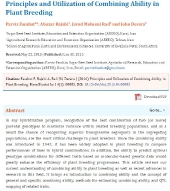
 1
1




“The most important decision we make is whether we believe we live in a friendly or hostile universe.”― Albert Einstein

 1
1






 3
3





 2
2





 2
2










 1
1






 1
1





 1
1








 1
1




Joseph Lofthouse wrote:March 2016 -- I potted up 66 Sungold F2 plants. I'm intending to screen them for exerted stigmas

 2
2





 3
3








 2
2




Joseph Lofthouse October 2nd wrote:F1: [WXO X (Sun4 X Pink)].

 1
1








 2
2




Joseph Lofthouse wrote:The F1 hybrid: [NOID Red X LA1777]




“The most important decision we make is whether we believe we live in a friendly or hostile universe.”― Albert Einstein









 . So I was surprised to find this in the catalogue Tomato Groseille / Red Current Lycospersicon pimpinellifolium with the warning dont grow this if you want to save seeds as it pollinates other tomatoes http://www.germinance.com/tomate_groseille_27-F9-E91.php ( yes I know its in French but since I live in France you have to go with the flow non? ) Could this be used by others seeking to make their own land race ?
. So I was surprised to find this in the catalogue Tomato Groseille / Red Current Lycospersicon pimpinellifolium with the warning dont grow this if you want to save seeds as it pollinates other tomatoes http://www.germinance.com/tomate_groseille_27-F9-E91.php ( yes I know its in French but since I live in France you have to go with the flow non? ) Could this be used by others seeking to make their own land race ?Living in Anjou , France,
For the many not for the few
http://www.permies.com/t/80/31583/projects/Permie-Pennies-France#330873






 2
2










“The most important decision we make is whether we believe we live in a friendly or hostile universe.”― Albert Einstein
 1
1




 1
1





“The most important decision we make is whether we believe we live in a friendly or hostile universe.”― Albert Einstein

 1
1













Casie Becker wrote:Am I right in guessing these are determinate tomatoes? Or has your focus on the flowers allowed some indeterminate traits to survive?




 1
1





 strangely he gives no more details on this
strangely he gives no more details on this 
Living in Anjou , France,
For the many not for the few
http://www.permies.com/t/80/31583/projects/Permie-Pennies-France#330873
 1
1





 1
1





|
The tiny ad to rule them all
The new gardening playing cards kickstarter is now live!
https://www.kickstarter.com/projects/paulwheaton/garden-cards
|









